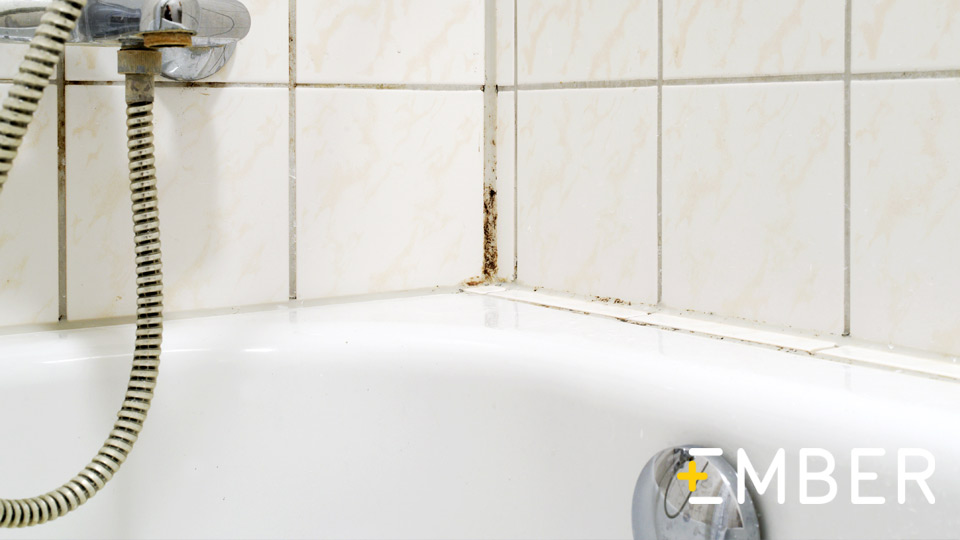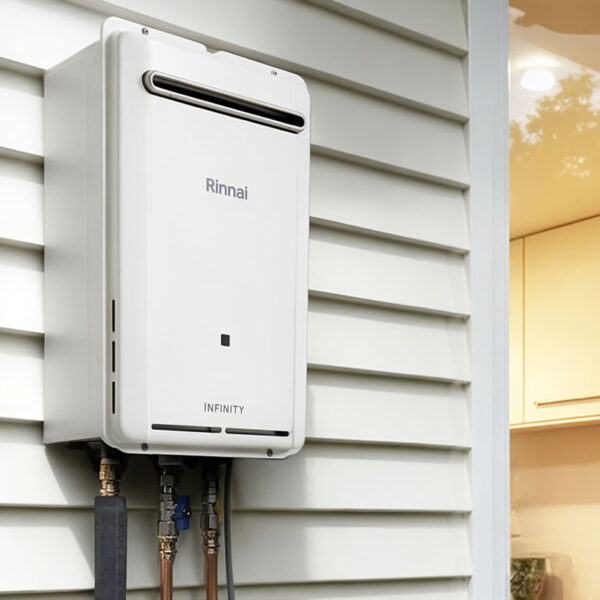How to Stop Mould, Mildew and Damp in your Bathroom

A clean and fresh bathroom is a sanctuary for many, offering a place to unwind and indulge in self-care rituals. However, mould, mildew, and dampness can quickly compromise your bathroom’s hygiene and aesthetic appeal. Due to the warm and moist environment, bathrooms are often a breeding ground for these unwelcome guests. We’ll explore practical solutions to prevent the growth of mould and mildew and maintaining a dry bathroom.
Improve Ventilation
Poor ventilation is one of the main culprits of mould growth in bathrooms. As steam builds up during bath or shower time, it condenses on walls and ceilings—providing an ideal habitat for mould. Opening a window during bathing is an effective way to combat condensation. However, if this is not possible due to privacy or weather concerns, installing an exhaust fan can be a great alternative—a good guideline is to let the exhaust fan run for 10-15 minutes after showering.
Use Mould-Resistant Products
Mould-resistant products can significantly reduce the chances of mould growth in your bathroom. When sealing joints or applying any adhesive products in your bathroom space, opt for mould-resistant alternatives such as anti-mould silicone sealant and grout. Additionally, consider using semi-gloss paint on bathroom walls instead of flat paint as it is less susceptible to water damage and generally more resilient.
Dry Wet Surface
Make it a habit to dry wet surfaces after every bath or shower session. Use a squeegee or towel to wipe down water droplets on tiles, glass panels or doors and sinks – paying special attention to corners that get less light exposure where mould is most likely to flourish. This simple task will significantly minimize moisture retention in your bathroom.
Avoid Excessive Fabric
While bathmats, rugs, and decorative towels add an appealing touch, they can also absorb moisture and provide another breeding ground for mould and mildew. Ensure that all fabrics are properly dried and laundered at least once a week. It is also crucial to hang wet towels to dry after use rather than folding them while damp, as this will discourage mould growth.
Control Humidity
Keeping humidity levels low in the bathroom is essential to curb the growth of mould and mildew. For larger spaces, a dehumidifier can be an effective solution to maintain a healthy humidity range of 40-50%. For smaller bathrooms, moisture-absorbing crystals, such as Silica Gel or Calcium Chloride pallets in a dehumidifying container, can help maintain optimal humidity levels while occupying minimal space.
Routine Maintenance and Cleaning
Regular cleaning is vital in preventing mould, mildew and dampness in the bathroom. Implement a routine cleaning schedule that includes scrubbing tile grout, shower curtains, and other surfaces with suitable bathroom cleaners. Use bicarbonate soda combined with water as a natural cleaning agent to remove mould from grout lines or apply white vinegar sprays on surfaces to kill mould spores.
Regular Inspections
Lastly, make it a habit to periodically inspect your bathroom for signs of leaks or water intrusion. Check walls, ceilings, plumbing fixtures, sealants around the bathtub or shower tray for any signs of moisture damage. Taking prompt action at the first signs of water leakage would prevent any further aggravation or complications.
Keeping your bathroom free from mould, mildew and dampness not only guarantees its aesthetic appeal but ensures it remains hygienic for you and your family. By following these practical tips along with proactive maintenance practices will go a long way in maintaining a fresh bathroom environment that’s free of harmful mould.






